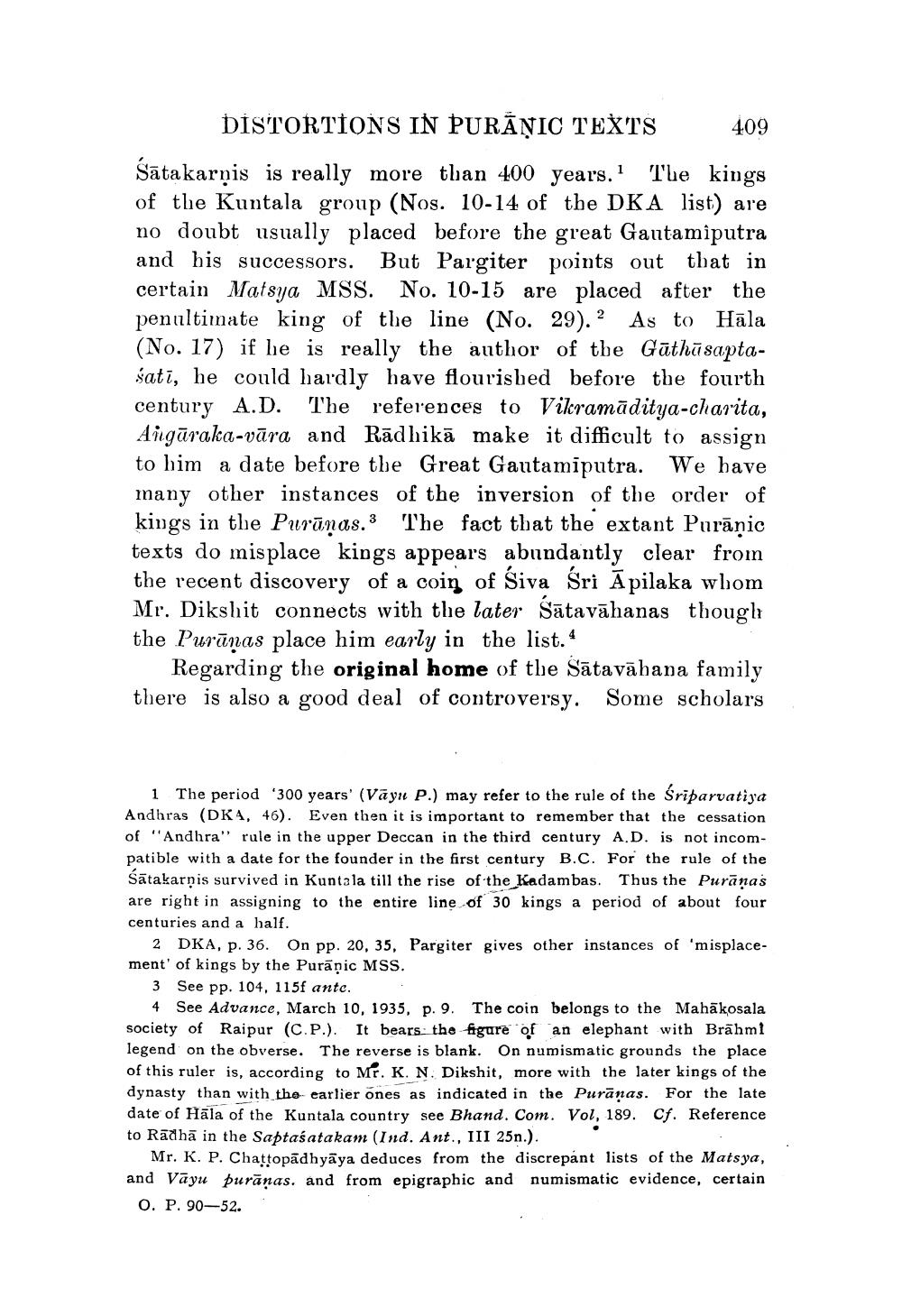________________
DISTORTIONS IN ÞURĀŅIC TEXTS 409 Sātakarņis is really more than 400 years. The kings of the Kuntala group (Nos. 10-14 of the DKA list) are no doubt usually placed before the great Gautamiputra and his successors. But Pargiter points out that in certain Matsya MSS. No. 10-15 are placed after the penultimate king of the line (No. 29). ? As to Hāla (No. 17) if he is really the author of the Gūthūsaptasati, he could hardly have flourished before the fourth century A.D. The references to Vikramāditya-charita, Aigūraka-vāra and Rādhikā make it difficult to assign to him a date before the Great Gautamīputra. We have many other instances of the inversion of the order of kings in the Purūnas.3 The fact that the extant Purāņic texts do misplace kings appears abundantly clear from the recent discovery of a coin of Siva Sri Āpilaka whom Mr. Dikshit connects with the later Sātavāhanas though the Purūnas place him early in the list.“
Regarding the original home of the Sātavāhana family there is also a good deal of controversy. Some scholars
1 The period 300 years' (Vāyu P.) may refer to the rule of the Sriparvatiya Andhras (DKA, 46). Even then it is important to remember that the cessation of "Andhra" rule in the upper Deccan in the third century A.D. is not incompatible with a date for the founder in the first century B.C. For the rule of the Sātakarnis survived in Kuntala till the rise of the Kadambas. Thus the Purānas are right in assigning to the entire line of 30 kings a period of about four centuries and a half.
2 DKA, p. 36. On pp. 20, 35, Pargiter gives other instances of 'misplacement' of kings by the Purāņic MSS.
3 See pp. 104, 115f antc.
4 See Advance, March 10, 1935, p. 9. The coin belongs to the Mahākosala society of Raipur (C.P.). It bears: the figure of an elephant with Brāhmi legend on the obverse. The reverse is blank. On numismatic grounds the place of this ruler is, according to Mr. K. N. Dikshit, more with the later kings of the dynasty than with the earlier ones as indicated in the Purānas. For the late date of Hāla of the Kuntala country see Bhand. Com. Vol. 189. Cf. Reference to Rādhā in the Saptaśatakam (Ind. Ant., III 25n.).
Mr. K. P. Chattopadhyāya deduces from the discrepant lists of the Matsya, and Vāyu purānas, and from epigraphic and numismatic evidence, certain
O. P. 90—52.




